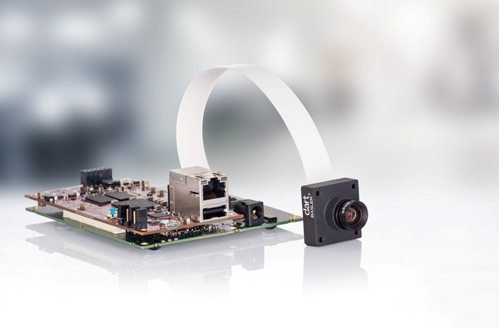Following the launch of an online embedded vision development hub, Basler’s Mark Hebbel discusses the role embedded computing could play in industrial imaging and the company’s strategy for adapting to this technology
Embedded processing platforms are growing both more powerful and more prevalent; companies can now produce system designs that were inconceivable just a few years ago. Single board computers (SBCs) such as Raspberry Pi allow a young generation of ambitious professional makers to implement fresh and in some cases completely unconventional ideas. In addition, product cycles are growing shorter, meaning engineers and developers are faced with increased time pressure.
Embedded technology originated on the consumer market, where high performance, small dimensions and low costs all contributed to its success. In the past, the choice to integrate embedded technology into a system typically started with complicated research and in many cases ended with mediocre results or an extended back-and-forth with manufacturers. Only developers with previous experience of this approach could navigate the design and development process efficiently. What was missing was a ‘hub’ for different questions related to the topic of embedded vision, with information about actual implementations and concrete design ideas, all independent of the physical location of the forum contributors.
Imaginghub offers precisely that kind of space. It has developed into one of those rare communities where engineers feel comfortable discussing their ideas with colleagues and working together to improve them. Engineers and developers are already increasingly relying on mashups or sample cases – not unlike classic reference designs, except here put together by other developers in the community. For Basler, the key to the future of embedded vision lies in online interaction within a virtual environment. The members of a team working together on the construction of a product prototype can meet and work together virtually from wherever in the world they are located.

Basler's PowerPack Embedded vision system
The partner network features companies ready to offer the community their expertise in the fields of software, hardware or system integration. This makes it easier to search for potential partners in the implementation of concrete projects, and helps prototypes evolve into real products. The trust relationship will shift from marketing departments at large companies to like-minded colleagues holding similar positions at various firms.
This trend toward communities and shorter product cycles will not just be limited to the industrial markets, we believe, but will eventually come to influence all markets. Vertical markets are subject to a certain degree of globalisation. To keep hardware costs low, standards are a must, which will in turn allow hardware producers to benefit from the economics of scale. Software can also be adjusted more rapidly and flexibly where user communities are involved, to hasten time-to-market.
Embedded computing in industry
Embedded computing is thus becoming an increasingly common tool for industrial firms and OEMs. Development departments are more frequently exploring system on chips (SoCs), system on modules (SoMs) and single board computers (SBCs) to test their compatibility with industrial use.
The trend has also touched the vision industry: we at Basler and other established producers of industrial cameras are increasingly discussing the development of integration-friendly, affordable board-level cameras working with processor architectures from firms like Xilinx's Zynq-7000 SoC family. On the one hand, this provides greater flexibility in development and more opportunities to accelerate applications; on the other hand, it requires greater expert knowledge, more investment in integration and on the whole a higher floor for investment.
This is precisely where Imaginghub can help. Online discussions within the community help developers save valuable time in the conceptual design of a system. That in turn has a positive impact on a product's development costs, both for companies that already have experience in this field and those looking to make a transition from classic machine vision concepts toward embedded vision systems. At the same time, an embedded developer who until now has had little contact with machine vision will also benefit from a platform offering the support needed to integrate a camera into an embedded system.
After all, Imaginghub is not just oriented towards corporate development departments, but also professional makers who want to use their acquired expertise to develop products for goals such as a start-up. Students will also be afforded space in the forum to acquire knowledge about embedded vision technology or otherwise discuss their experiences.
Virtual project spaces
Beyond the forum and partner network, there are also project spaces available for users to create and develop collaborative projects. Designs can be documented here, with the option to connect to GitHub and a simple task list and tools for organising the project. Inside a project room, members also have access to a private forum for internal communication.
The project rooms also offer the option of documenting hardware and software reference designs so that other users can be made aware of potential development tasks that may interest them. We hope to see lively exchange within the community and, who knows, perhaps an exciting business opportunity or two will arise between the participants and the companies.
--

Mark Hebbel is head of new business development ecosystem at Basler. The company’s Imaginghub was launched in September 2016.
Related articles:
Online embedded vision community established
Online hub to accelerate development of embedded vision
Embedded vision to transform industrial imaging? - Greg Blackman at the Vision trade fair in Stuttgart finds that embedded image processing looks set to transform the vision industry
Changing the face of machine vision? - Greg Blackman investigates the rise of embedded vision and finds that advances in computer hardware are set to revolutionise factory automation

